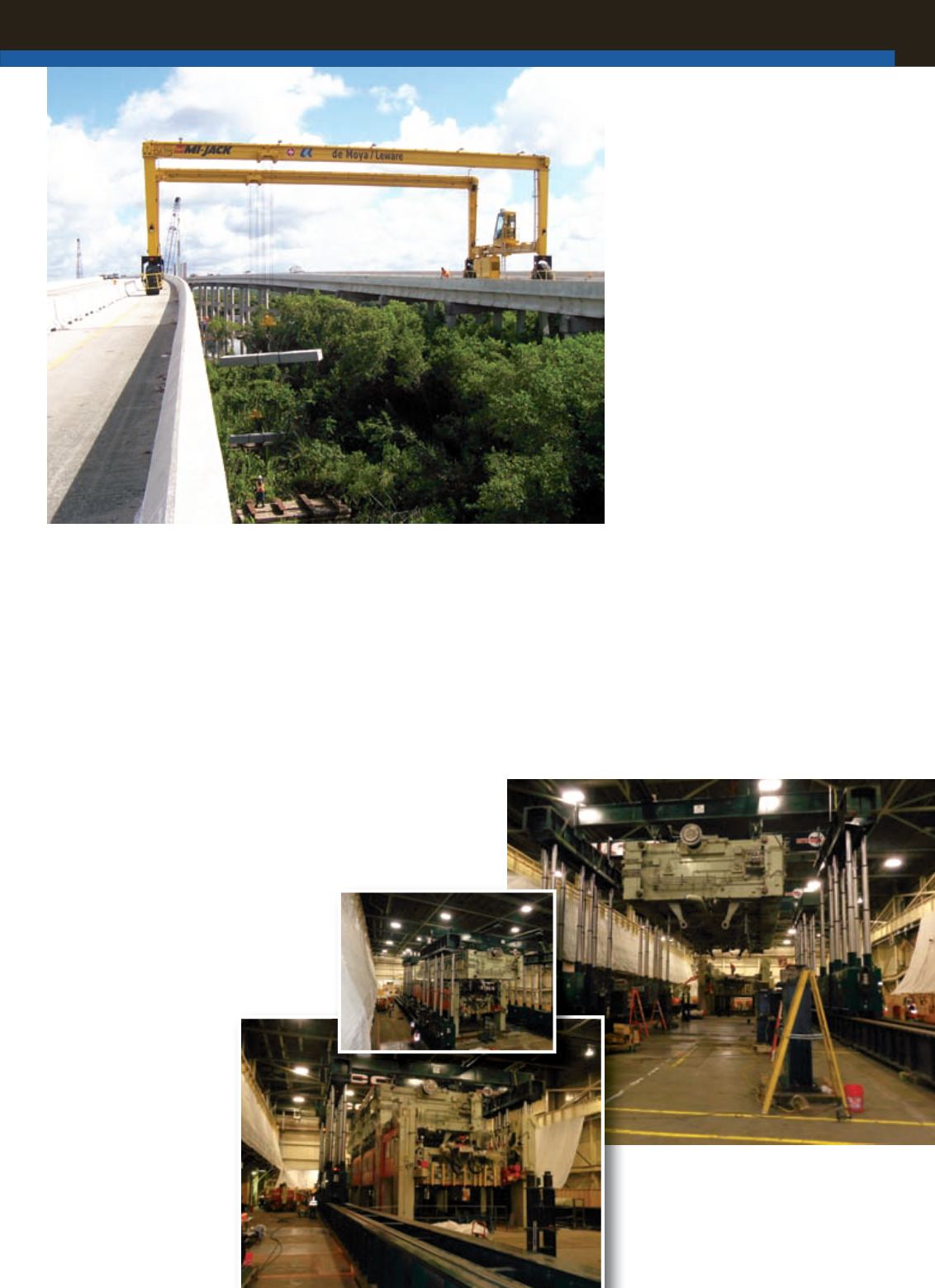
AUGUST 2013
ACT
37
SPECIALIZED LIFTING
PRODUCT FOCUS
at the same time, until it could be lowered
5 feet, 6 inches below grade. Once it was
below grade we were able to then skate the
unit, with our steerable rollers, into a live
energy center at the university.”
Martin says the rigging plan required
strategies for every scenario.
“We had to really think about how we
were going to safely finish the project
under the time constraints that we were
given,” he says. “We had to think about the
feasibility of many options. Ultimately our
team decided the gantry, skates and GMK
7550 would be the right equipment. This
was truly a job that involved many of our
companies’ resources and teams.”
Bridging the gap
An AccuSteer Differential GPS navigation
system by Mi-Jack Products is a key
component for a project in Central Florida
that involves the addition of two lanes
to the Caloosahatchee River Bridge. The
bridges are high-level, fixed structures
over a major navigable waterway and
require heavy construction
activities in an
environmentally sensitive
area.
The construction
companies chose to use
a pair of MJ70 Travelift
cranes to implement a
top-down construction
method. The cranes are
handling piling, bridge
beams, decking and
reinforcement materials.
The MJ70 Travelift cranes were built to
specifications to have an 83-foot, 6-inch
inside clear width, 25-foot, 5-inch hook
height, and a 40-foot wheelbase. The
construction companies also chose to use
the Mi-Jack AccuSteer Differential GPS
navigation system based on the precision
required to steer the machines on such
tight aisle ways as well as the large span
between the tires.
AccuSteer is a sophisticated navigation
system based on leading differential GPS
technology employing
precision GPS
navigation, according
to Mike Lanigan, Jr.,
Mi-Jack Sales manager.
“The system is crucial
to this job as it allows the operator
to concentrate on the loads they are
moving,” he says. “This is made possible
because the AccuSteer Differential GPS
navigation system generates information
on the cranes’ position within accuracies
of 2 centimeters by employing two sets
of dual-frequency receivers and antennas
fixed to each of the cranes and one set
located at the base station. Solar-powered
base stations were placed at the peak of
the bridge outside the lanes of traffic.”
The clear line of sight allows the
Navigation Processor to accurately
generate steering correction data for the
crane’s electronic control system, which is
then translated into crane movements.
“That process allows the cranes to
travel along a GPS-generated pathway
to within plus or minus 2 inches of the
center line of the tire,” Lanigan explains.
“Without this system the job would not
be completed as efficiently as it could be.”
Transfer press conundrum
General Motors awarded International
Industrial Contracting Corporation (IICC)
a project that involved the installation of
an IHI 6,500-ton capacity transfer press
system for GM’s Fairfax assembly plant in
Kansas City, MO.
The new press was a critical addition
to the automaker’s ability to turn out
new models of Chevy Malibu and Buick
LaCrosse, according to IICC’s Randall
Goddard.
A pair of Mi-Jack MJ70 Travelift
cranes are used to implement
a top-down construction
method to add two lanes to the
Caloosahatchee River Bridge.
The cranes are handling piling,
bridge beams, decking and
reinforcement materials.
International Industrial Contracting
Corporation installed an IHI 6,500-ton
capacity transfer press system for GM’s
Fairfax assembly plant in Kansas City, MO.


